By Louis J. Salome
As Christmas and Hanukah approach, many of us find ourselves madly wrapping packages to be shipped off to family and friends around the globe. Will we entrust our treasures to the oft-maligned but still remarkably reliable U.S. Postal System or to one of its chief competitors, FedEx, DHL, or United Parcel Service? After that decision, the rest is straightforward and familiar. Not so in France. Guest writer Louis J. Salome, author of “Violence, Veils, and Bloodlines: Reporting from War Zones,” describes the elaborate labyrinth he had to navigate when he went to La Poste to mail a painting from Saint-Remy-de-Provence to his daughter in Seattle, Washington.
On my first visit to beautiful Saint-Remy-de-Provence, young bulls ruled the streets and young men taunted them in a miniature version of Pamplona. That was in mid-September 2001. My second visit came a few days later when I enjoyed delicious crepes on the street and visited the St. Paul de Mausole hospital on the fringe of Saint-Remy.
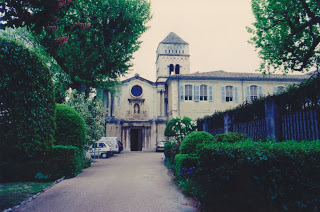 |
| St. Paul de Mausole in St. Remy |
St. Paul de Mausole is where Vincent van Gogh convalesced for a year in 1889, and where he painted many of his marvelous works. When I was there, St. Paul’s was still a hospital, but it was for women only; its patients used art as therapy and sold their paintings in the hospital’s gift shop. The van Gogh connection remained real and vital 112 years after the artist had left.
 |
| Van Gogh self-portrait 1889 |
Van Gogh, the hospital and its latest patients introduced me to medieval France in a way that must be experienced personally to be known at all.
Margaret, my older daughter, bought a…
medium-size painting in the hospital’s gift shop. The large bold painting of a mother and child seemed a perfect illustration of the work of a female patient, which it was.
To protect the painting from possible damage, Margaret wanted it sent by mail to her home in Seattle. That’s when medieval France entered the picture, complete with a local jeweler, special wax, a double-boiler and a metal stamp to seal the deal at the post office.
The next afternoon I brought the painting to Mr.Bricolage, a French version of Home Depot, Lowe’s or any large lumber and hardware store, near our vacation abode in the town of Beaucaire on the Rhone River. There, workers built a sturdy wooden frame around the painting. By the time that operation was finished, it was too late in the afternoon to deal with the local post office.
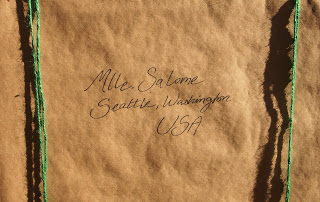
That wouldn’t be a problem, I thought; I could mail the package the following morning. But I hadn’t counted on the wax, the metal stamp, the jeweler and the double-boiler.Bearing my French dictionary along with my high school and college French and the well-fortified painting, I marched confidently to the local post office the next morning. After waiting in line for a time, then explaining that I wanted insurance on the package, and flipping through a few pages in my dictionary as our conversation went along, I figured out that the post office couldn’t be my friend until I picked up some special wax and a metal stamp from the local jeweler around the corner. But I had to hurry before the jeweler closed for lunch and a mid-day break.
The wax and stamp were necessary for insurance purposes. Only if the wax seal on the package were broken could an insurance claim be made. Without a wax seal stamped on the string that wound around the package there could be no insurance.
The jeweler was accustomed to the drill, but it was new to me. He gave me a ball of hard wax and the metal stamp. What next? I wondered. You must go to your home, melt some of the wax in a pan, pour it where the string touches the paper covering the package and then, while the wax remains soft, apply the stamp to the wax. That’s how the deal would really be sealed.
At our charming medieval house in a cul-de-sac in Beaucaire’s old town, I decided that a small double-boiler was the best tool for melting the right amount of wax to seal the package. By this time, I had help. With the aid of many hands, I applied the melted wax to the strings and the package and, before the wax hardened, I jammed the metal stamp into the wax. Voila. We had solved part of the medieval puzzle.
But I still had to return to the post office to actually mail the package and pay the postage and insurance. At this point, that task was a snap, and we were all smiles, the postal clerks and I. Quickly, however, I dashed back to the jeweler to return the wax and the metal stamp before he closed, for lunch or the day, I don’t recall which. I didn’t want to spend the following day on this package deal; I didn’t want this medieval adventure to turn into a three-day affair.
The experience was memorable in every sense, not the least of which was the safe arrival of Margaret’s painting in Seattle.
Lest anyone forget, it is these off-the-beaten-path affairs that make traveling so much fun, and so easy to remember.
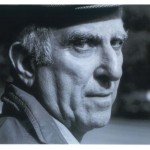 Retired journalist Louis J. Salome spent more than 35 years as a newspaper reporter and editor including 17 years at The Miami (Florida) News, where he was the editorial page editor for 10 years; more than 9 years overseas with Cox Newspapers, Inc.; 5 years with The Palm Beach (Florida) Post and 4 years with the Worcester (Massachusetts) Telegram & Gazette. His numerous awards and prizes for reporting and editorial writing include the National Society of Professional Journalists (Sigma Delta Chi) Award for Editorial Writing, which he won twice. He lives in Portsmouth, New Hampshire.
Retired journalist Louis J. Salome spent more than 35 years as a newspaper reporter and editor including 17 years at The Miami (Florida) News, where he was the editorial page editor for 10 years; more than 9 years overseas with Cox Newspapers, Inc.; 5 years with The Palm Beach (Florida) Post and 4 years with the Worcester (Massachusetts) Telegram & Gazette. His numerous awards and prizes for reporting and editorial writing include the National Society of Professional Journalists (Sigma Delta Chi) Award for Editorial Writing, which he won twice. He lives in Portsmouth, New Hampshire.


 Retired journalist Louis J. Salome spent more than 35 years as a newspaper reporter and editor including 17 years at The Miami (Florida) News, where he was the editorial page editor for 10 years; more than 9 years overseas with Cox Newspapers, Inc.; 5 years with The Palm Beach (Florida) Post and 4 years with the Worcester (Massachusetts) Telegram & Gazette. His numerous awards and prizes for reporting and editorial writing include the National Society of Professional Journalists (Sigma Delta Chi) Award for Editorial Writing, which he won twice. He lives in Portsmouth, New Hampshire.
Retired journalist Louis J. Salome spent more than 35 years as a newspaper reporter and editor including 17 years at The Miami (Florida) News, where he was the editorial page editor for 10 years; more than 9 years overseas with Cox Newspapers, Inc.; 5 years with The Palm Beach (Florida) Post and 4 years with the Worcester (Massachusetts) Telegram & Gazette. His numerous awards and prizes for reporting and editorial writing include the National Society of Professional Journalists (Sigma Delta Chi) Award for Editorial Writing, which he won twice. He lives in Portsmouth, New Hampshire.
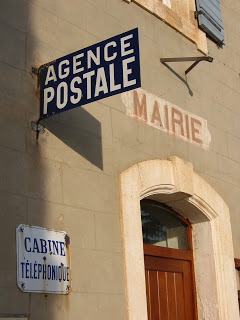

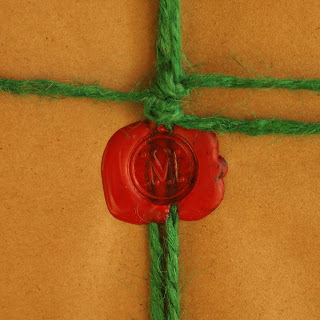
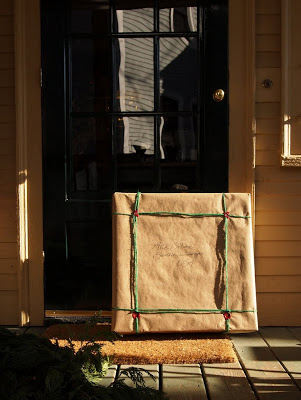
I moved from my home in France (after twenty years there) and did it all by par la poste. The only exception was a painting that was too large so it came by another carrier. I mailed about 30 boxes over a period of two months and by the time I mailed the last one, I was "tu" to all the clerks. When I went back to Riberac the next time (18 months later) I was greeted warmly by the staff who were pleased to learn that all the packages had arrived safely (though not in the order in which they were posted).
When I returned this summer (3 1/2 years after moving) I found that the post office had been remodeled and that all the clerks I knew had been replaced.Dommage!
I love that story told in the comment above. Every time I think about it, I smile. thanks so much for sharing it!
Best regards,
Susan